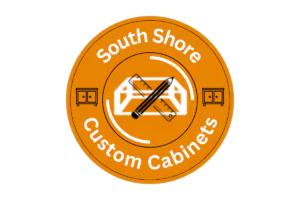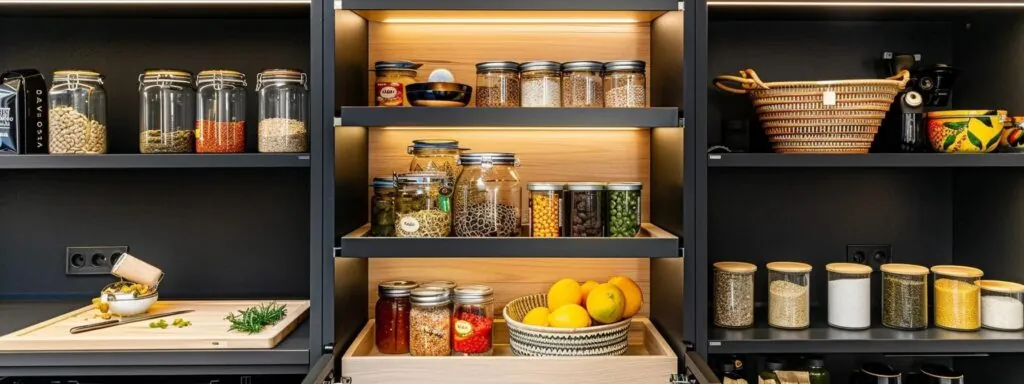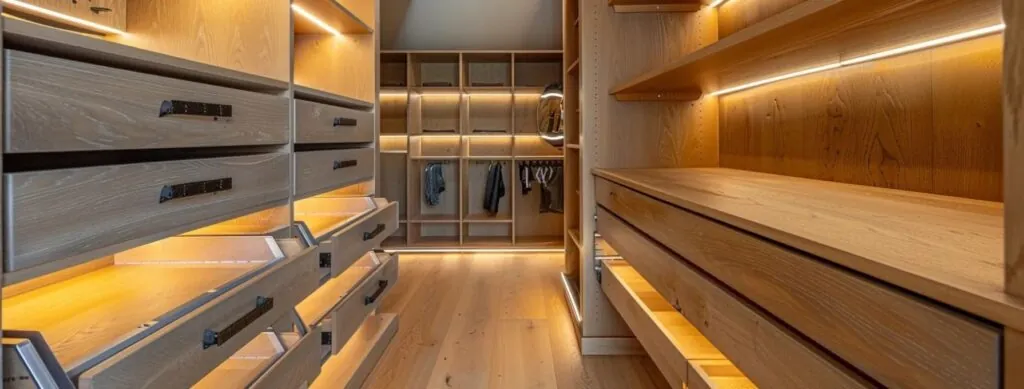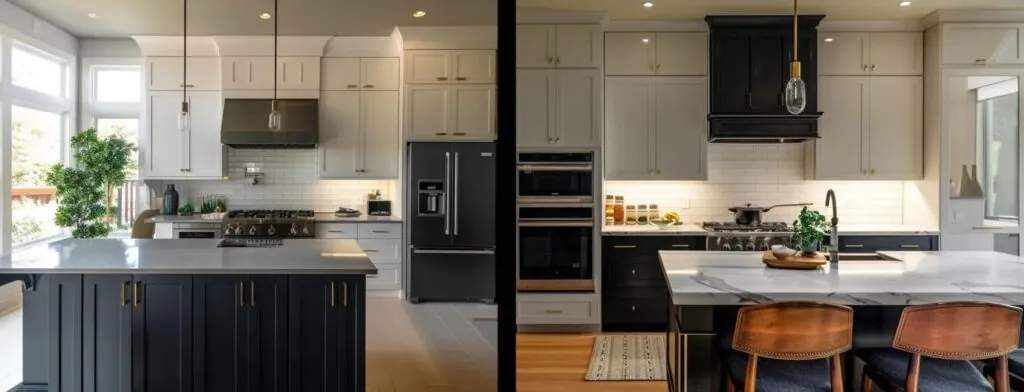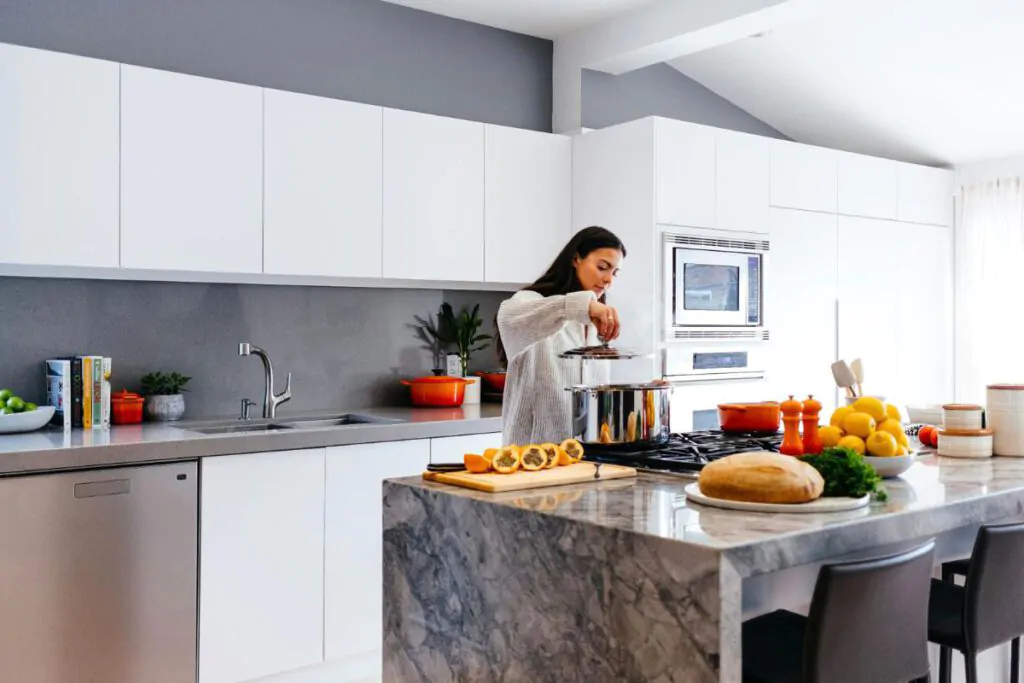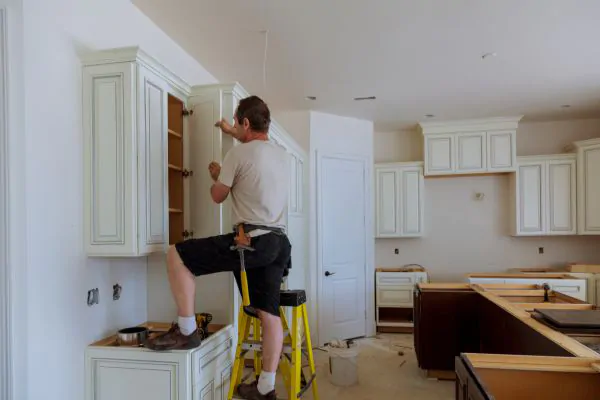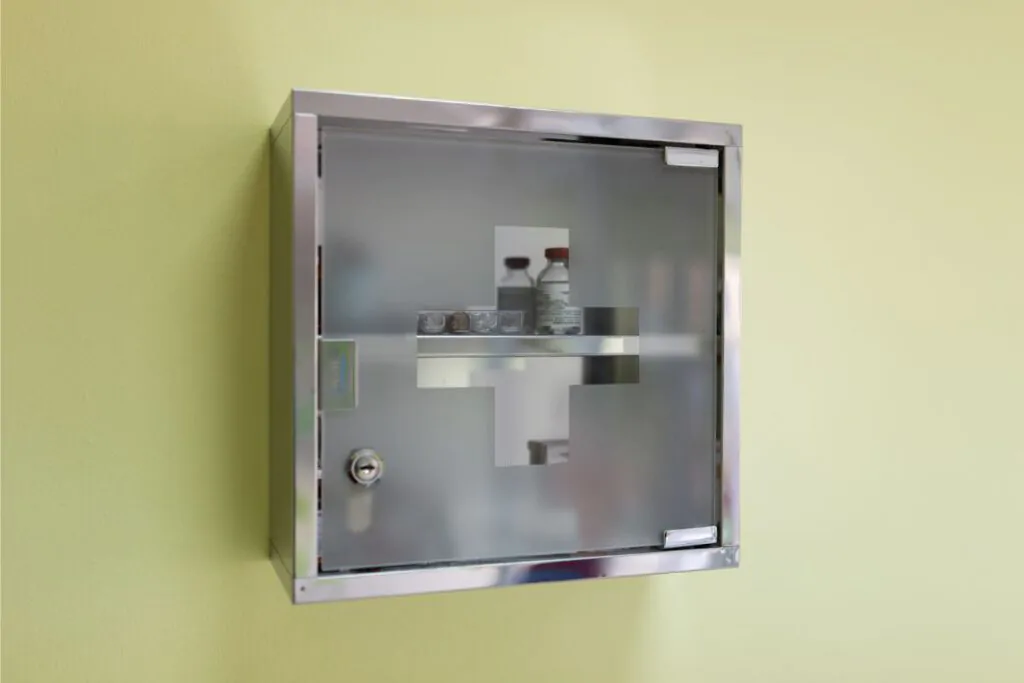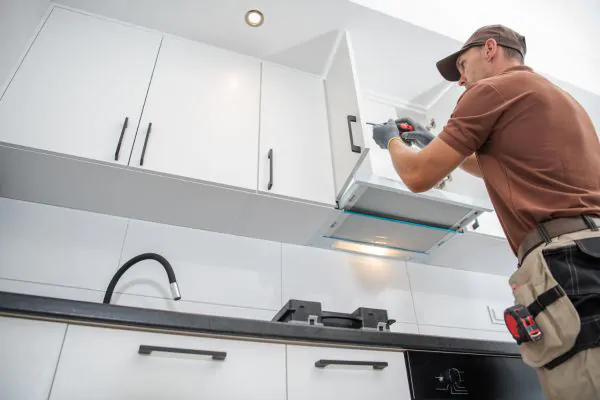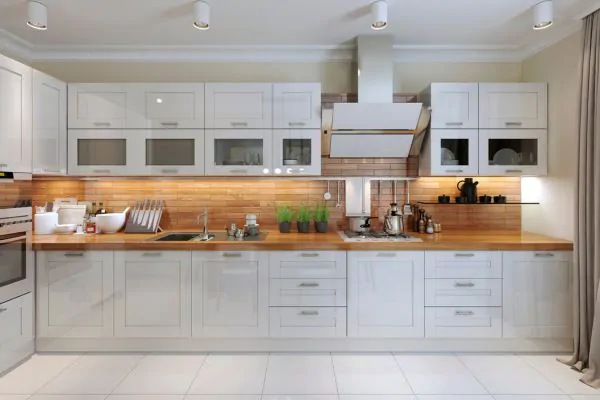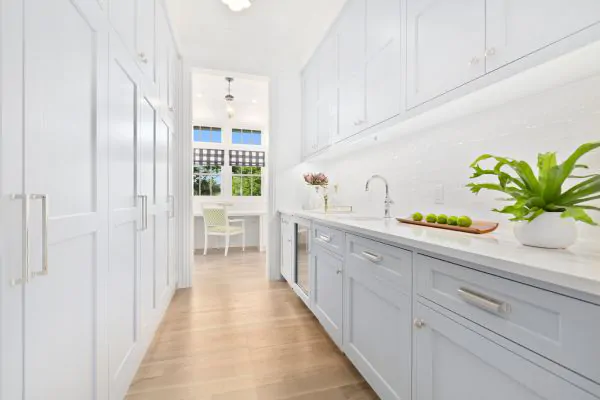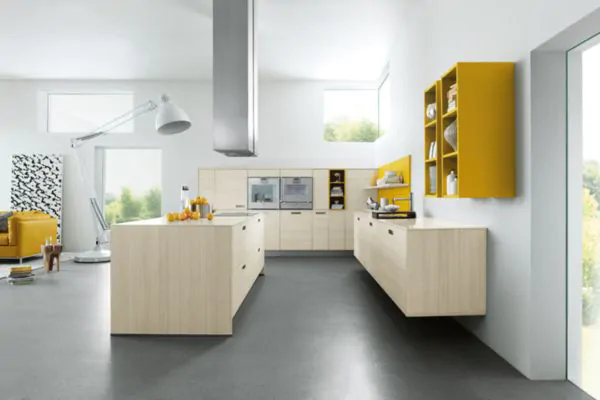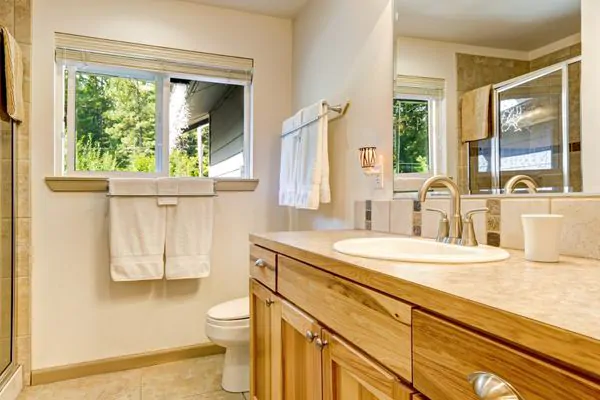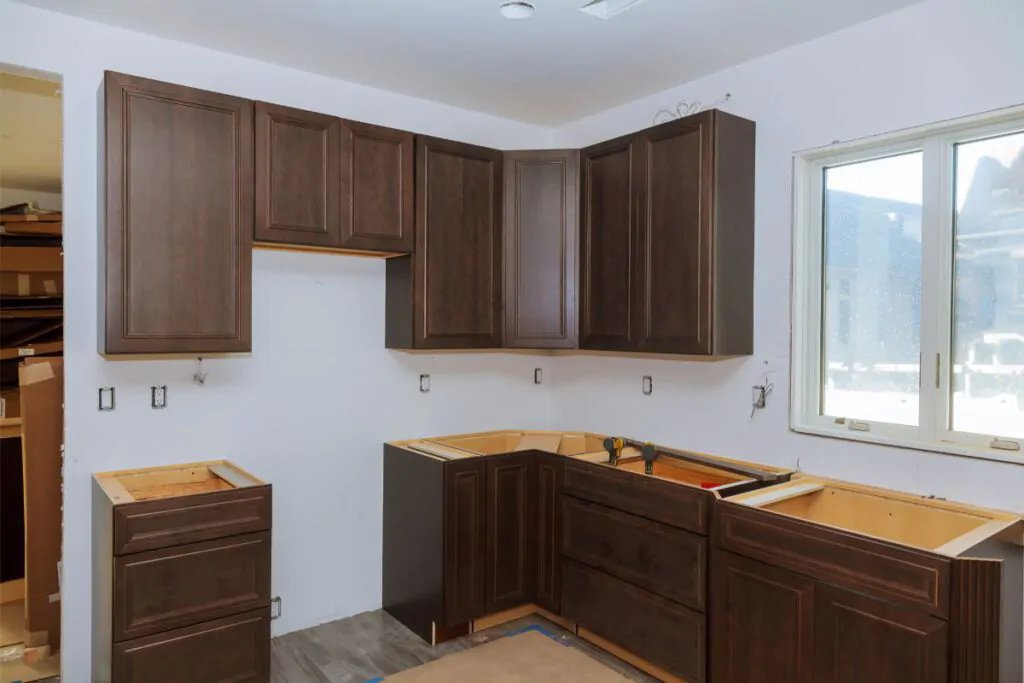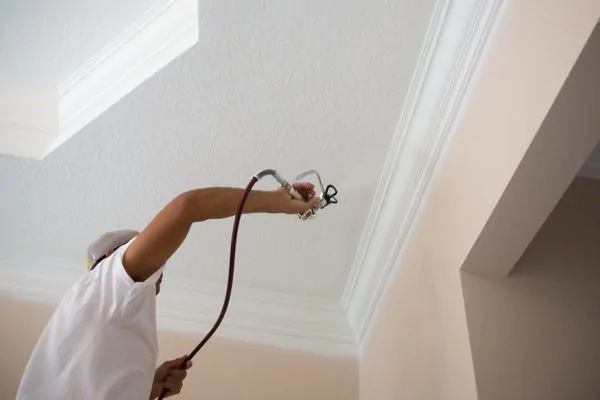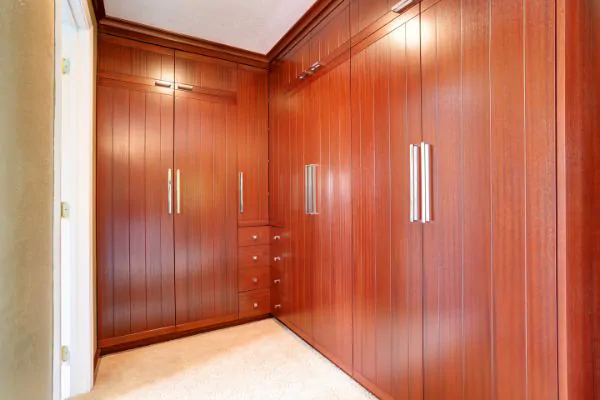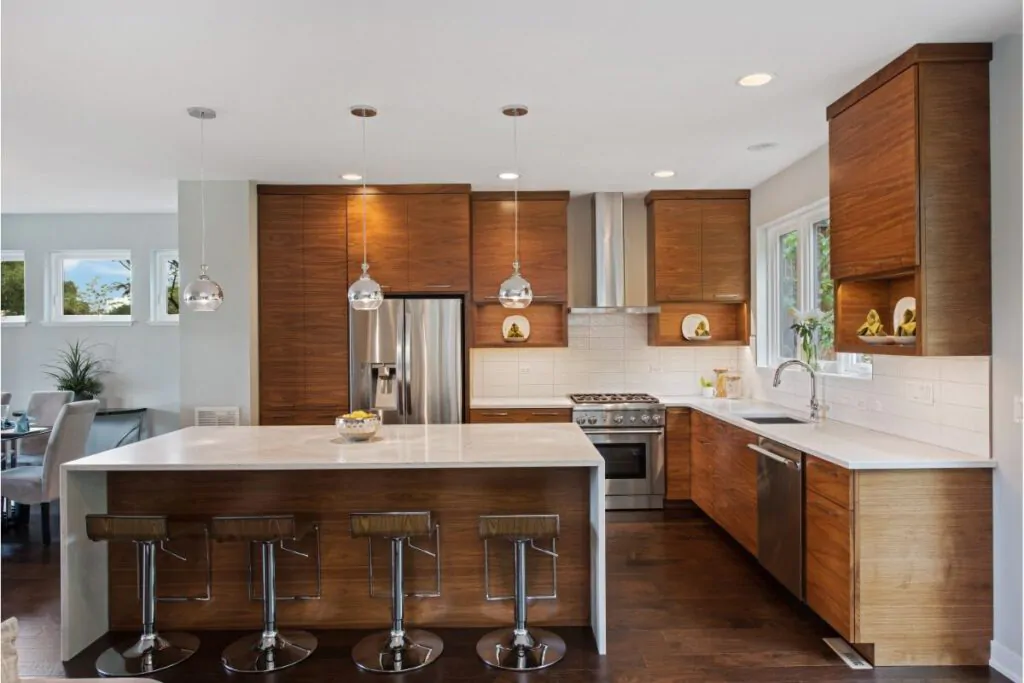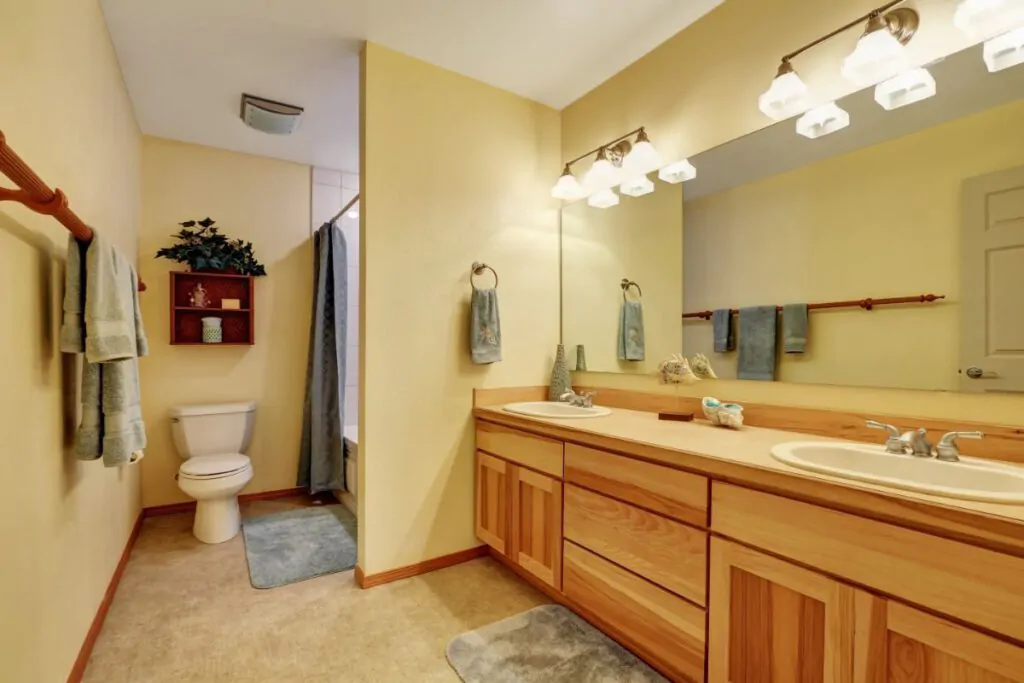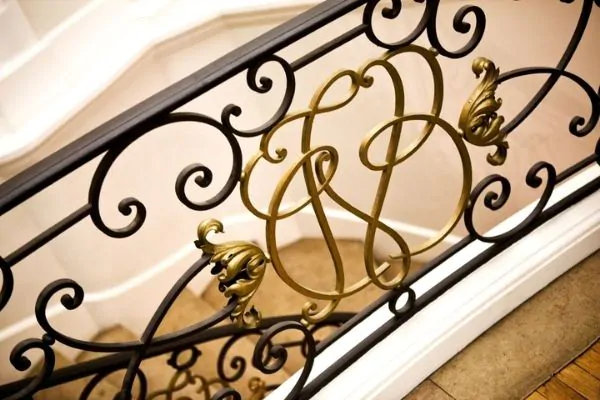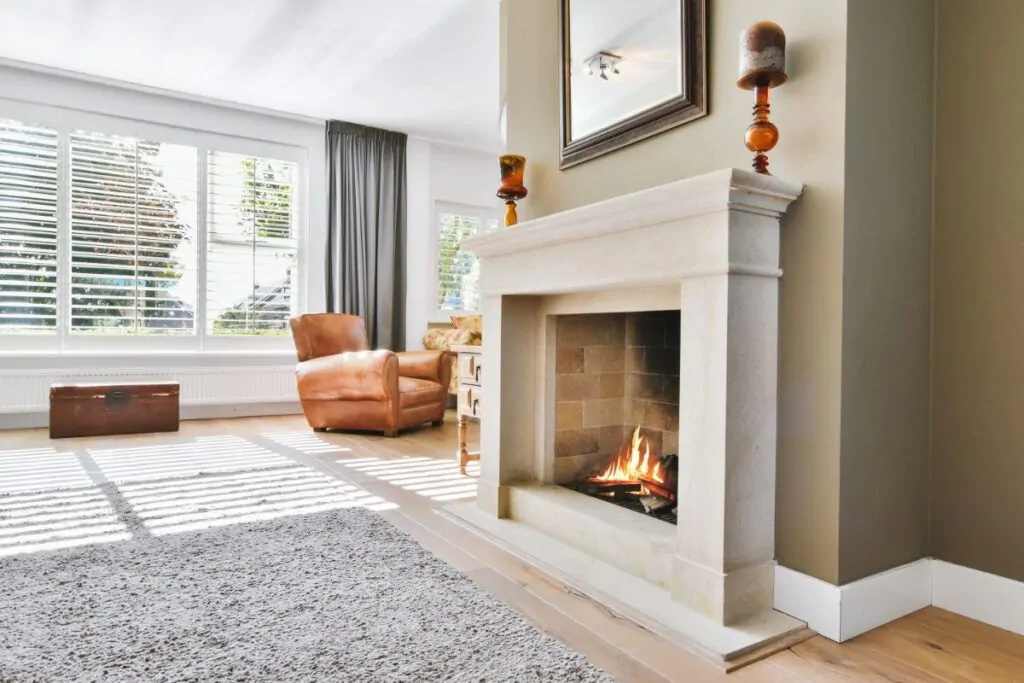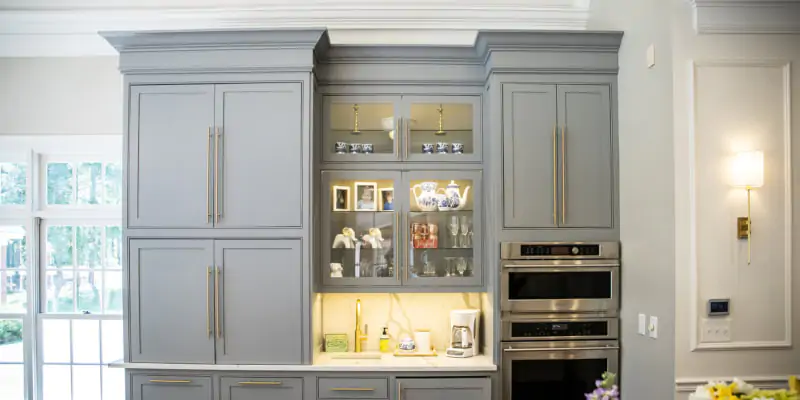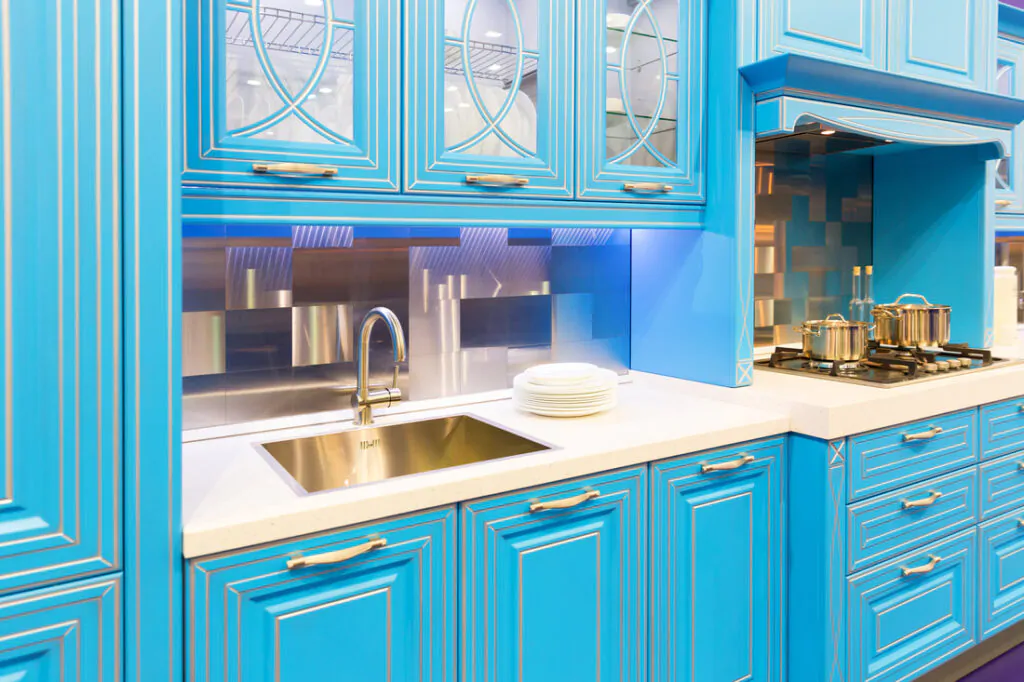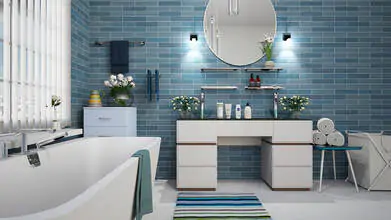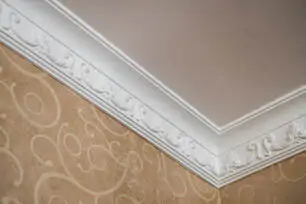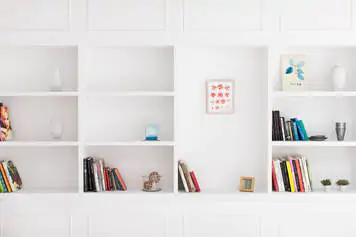Remodeling a kitchen is an exciting investment, but one of the most significant decisions you will make is choosing the right cabinets. If you are wondering how much cabinets cost for a 12×12 kitchen, the answer depends on several factors, including the type of cabinets, materials, and level of customization. With so many options available, it is essential to understand what affects pricing so you can make the best choice for your home and budget. Custom kitchen cabinets offer a level of customization and quality that can significantly impact your project’s overall costs and outcomes.
Cabinets are more than just storage—they define the style and functionality of your kitchen. Whether you are looking for affordable stock cabinets, semi-custom designs, or fully customized cabinetry, each option has different price points and benefits. Additional factors, like installation costs, specialty hardware, and custom finishes, can also influence the total expense.
Before committing to a design, it is essential to weigh your priorities. Do you want long-term durability, premium craftsmanship, or a cost-effective solution? Understanding the key cost factors will help you determine the right balance between style, function, and budget. In this guide, we will break down the various options and what to expect when pricing kitchen cabinets for a 12×12 space—helping you make a confident and informed decision.
Factors Affecting 12×12 Kitchen Cabinet Costs
The cost of kitchen cabinets for a 12×12 space depends on several key factors, including materials, design, and installation. While some homeowners opt for budget-friendly options, others invest in custom finishes and premium features that increase costs. Understanding these factors helps you plan a kitchen remodel that aligns with your budget and style preferences.
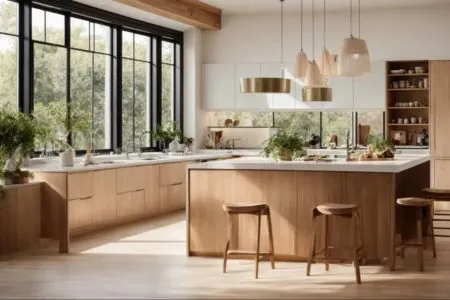
1. Cabinet Material
The type of material used in kitchen cabinets significantly affects the overall cost. Particleboard and MDF are affordable options but may lack durability. Plywood and solid wood offer greater strength and longevity but are more expensive. Specialty woods, like oak, cherry, or maple, add a premium look but cost more due to their quality and natural beauty. Veneers and laminates balance durability and affordability, offering a stylish finish without the high price tag of real wood. Choosing the right material depends on both budget and long-term durability expectations and how much wear and tear they are expected to endure.
2. Cabinet Style
Cabinet style affects both aesthetics and cost. Shaker cabinets are a classic, budget-friendly option, while raised-panel or inset cabinets require more craftsmanship and can be more expensive. Frameless cabinets, often used in modern kitchens, provide a sleek look but may require precise installation. Ornate, custom-designed doors with intricate details add elegance but increase costs due to labor and materials. The more detailed and customized the style, the higher the price. If you are looking for a cost-effective solution, choosing a simple, well-made design can provide function and style without exceeding your budget.
3. Space/Number of Cabinets Needed
A 12×12 kitchen typically requires a combination of upper, lower, and specialty cabinets, varying depending on storage needs. The more cabinets needed, the higher the overall cost. Adding pantries, corner cabinets, or deep drawers increases material and labor costs. Kitchen floor plans also play a role—an open concept may require fewer cabinets, while a design with more enclosed storage requires additional units. Planning an efficient cabinet layout helps balance functionality and cost while ensuring optimal storage for your kitchen space. The best cabinet design will not work if there is not enough room for it to be properly utilized.
4. Hardware and Finishes
The handles, knobs, and hinges on your cabinets may seem like small details, but they significantly impact both cost and design. Bare metal or plastic hardware lowers costs, while brass, bronze, or stainless steel options add durability and a high-end look. Soft-close hinges and drawer slides enhance functionality but increase expenses. Cabinet finishes also vary—painted finishes provide a sleek look but require maintenance, while stained wood finishes highlight natural grain. Choosing the right combination of hardware and finishes helps achieve the desired aesthetic without unnecessary spending.
5. Installation Costs
Professional installation ensures cabinets are level, secure, and built to last, but it adds to the overall cost. Installation fees depend on complexity, labor rates, and customization. Stock cabinets are typically more straightforward and quicker to install, while custom or semi-custom options require precise fitting and adjustments, leading to higher labor costs. If modifications to plumbing, electrical work, or walls are needed, expect additional expenses. While DIY installation can save money, hiring a professional ensures precision and long-term durability, reducing the risk of costly mistakes.
6. Additional Features
Customizations are a great way to invest in tailored looks and functions. Custom add-ons enhance convenience but come with extra costs. Features like pull-out shelves, soft-close drawers, spice racks, and built-in lighting improve functionality but require specialized installation. Glass-front cabinets, wine racks, and decorative moldings contribute to a high-end look but increase material and labor expenses. If working within a budget, prioritize essential features first and consider luxury additions later. Choosing practical upgrades that enhance daily use ensures a well-balanced kitchen investment without overspending.
Average Costs for 12×12 Kitchen Cabinets

The cost of 12×12 kitchen cabinets varies based on whether you choose stock, semi-custom, or fully custom options. They can range from $14,598 to $41,495. Each type offers different levels of quality, design flexibility, and pricing. While stock cabinets are the most budget-friendly, custom options provide high-end materials and personalized designs. Understanding these differences helps homeowners make the best choice.
Stock Cabinets
Stock cabinets are pre-manufactured, ready-to-install, and the most affordable option for homeowners looking for a cost-effective kitchen update. These cabinets come in standard sizes, limited styles, and fewer material choices. While they offer quick installation and a budget-friendly price, costing $2,000 to $8,000 and customization is minimal. They are best for simple kitchen layouts where standard sizing fits without significant modifications.
However, they may not be as durable as semi-custom or custom options, and material quality can vary. Despite these limitations, stock cabinets are an excellent choice for homeowners prioritizing affordability and quick installation.
Semi-Custom Cabinets
Semi-custom cabinets balance affordability and customization, allowing homeowners to select from various styles, materials, and finishes. These factory-built cabinets offer modifications like extra depth, door style changes, and specialty storage solutions. They are ideal for homeowners who want a more tailored kitchen design without the full price of custom cabinetry.
Although more expensive than stock cabinets, prices range from $5,000 to $15,000, semi-custom options provide better quality, durability, and design flexibility. They take longer to manufacture and install, but the improved craftsmanship and personalization make them a worthwhile investment for a well-designed kitchen.
Fully Custom Cabinets
Fully custom cabinets are built to exact specifications, offering the highest level of craftsmanship, materials, and personalization. Homeowners can choose unique layouts, specialty wood, intricate detailing, and one-of-a-kind storage solutions. Professionals handcrafted custom cabinets, ensuring a perfect fit for any kitchen space.
While they provide unmatched quality and a truly unique design, they require longer lead times and higher costs which go around $10,000 to $25,000 due to specialized labor and premium materials. This option is best for those seeking long-term durability, luxury finishes, and a completely customized kitchen layout.
Tips to Save on Kitchen Cabinet Costs
Upgrading kitchen cabinets can be a significant investment, but there are ways to reduce costs without sacrificing quality. By making smart choices on materials, installation, and design, homeowners can stay within budget while still achieving a functional and stylish kitchen. Here are some practical ways to save on 12×12 kitchen cabinets.
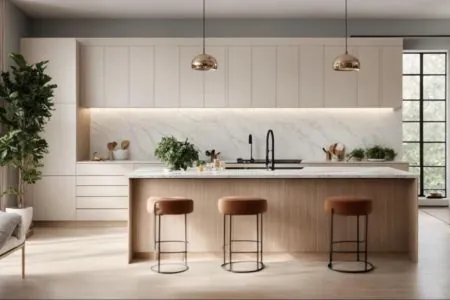
Compare Multiple Quotes
Cabinet prices vary depending on the supplier, manufacturer, and contractor. Getting multiple quotes ensures you find the best deal without overpaying. Compare options from big-box retailers, local cabinet makers, and custom woodworkers to see who offers the most value. Pay attention to material quality, warranty, and included features.
Some vendors offer discounts for bulk orders, seasonal promotions, or package deals that bundle installation with cabinetry. Researching and comparing prices can lead to significant savings on your kitchen upgrade.
Choose Budget-Friendly Materials
Material selection plays a significant role in cabinet pricing. High-end hardwoods and custom finishes are expensive, while MDF, laminate, and plywood provide durable, budget-friendly alternatives. Opting for thermofoil or veneer doors can mimic the look of expensive wood without the price tag.
Additionally, choosing standard sizes over custom-built cabinets helps reduce costs. If solid wood is preferred, consider less expensive species like birch or alder instead of cherry or mahogany. Prioritizing cost-effective materials ensures a quality finish while keeping expenses manageable.
Focus on Usability Over Aesthetics
While ornate designs and decorative features enhance a kitchen’s look, they aren’t always necessary. Focus on functionality first, ensuring cabinets offer ample storage, durable shelves, and easy accessibility. Skip unnecessary add-ons like glass doors, intricate molding, or decorative carvings, which increase costs without adding much value.
A well-planned kitchen prioritizes smart storage over expensive design details. It also prioritizes efficient layout and practical storage solutions, such as pull-out shelves or deep drawers, to improve usability while keeping the project affordable.
Focus on Needs Over Wants
Custom features, soft-close hinges, and specialized storage compartments can quickly drive up cabinet costs. While these extras add convenience, they may not be essential. Stick to core needs like durable cabinet construction, efficient storage, and a finish that complements your kitchen’s style. Instead of custom-built pantries or wine racks, invest in standard cabinet layouts with similar storage capacity. Eliminating non-essential features ensures you get high-quality cabinets that meet your needs without exceeding your budget.
DIY Installation (If Skilled)
Labor costs comprise a large portion of kitchen cabinet expenses, and DIY installation can help cut costs. If you are experienced with measurements, leveling, and power tools, installing stock or RTA (ready-to-assemble) cabinets can be a great way to save.
However, improper installation can lead to misalignment, gaps, or structural issues, which may cost more to fix later. Homeowners with limited carpentry experience should hire a professional installer to ensure a seamless and durable finish. A DIY approach only works when you have the right skills to execute the job correctly.
Make Your Dream Kitchen a Reality
At South Shore Custom Cabinets, we believe that your kitchen should be as beautiful as it is functional. Our handcrafted, custom-designed cabinets bring your home warmth, character, and value. Whether you are looking for a one-of-a-kind woodwork piece or a complete custom kitchen installation, our skilled team is dedicated to creating a space that reflects your style and needs.
With years of experience and a passion for woodworking, we take pride in delivering exceptional craftsmanship tailored to each client. Let us transform your kitchen into a masterpiece. Contact us today and bring your vision to life!
12×12 Kitchen Cabinet Cost Insights
Choosing the right kitchen cabinets for a 12×12 space requires careful planning. Materials, style, installation, and additional features influence the final cost. Whether you opt for stock, semi-custom, or fully custom cabinets, understanding your budget and priorities will help you make the best decision.
You can achieve a beautiful, long-lasting kitchen without overspending by comparing quotes, selecting cost-effective materials, and focusing on functionality over extras.
FAQs 12×12 Kitchen Cabinet Cost
1. What is the average price of new kitchen cabinets?
The average cost of new kitchen cabinets ranges from $3,000 to $15,000, depending on the materials, style, and customization. Stock cabinets are more affordable, while custom options can be significantly more expensive.
2. Who makes the best kitchen cabinets for the money?
For the best value and quality, custom kitchen cabinets are an excellent choice. A professional custom cabinet maker can design cabinets tailored to your space, style, and storage needs, ensuring durability and a perfect fit. Unlike stock cabinets, custom cabinetry offers premium materials, craftsmanship, and unlimited design possibilities. If you want a long-lasting investment that enhances your kitchen’s functionality and aesthetics, choosing a trusted custom cabinet manufacturer is the best option.
3. What is a good budget for kitchen cabinets?
A good budget for kitchen cabinets typically falls between $5,000 and $15,000 for a mid-range kitchen. If you’re looking for high-end custom cabinets, you may need to budget upwards of $20,000 or more.
